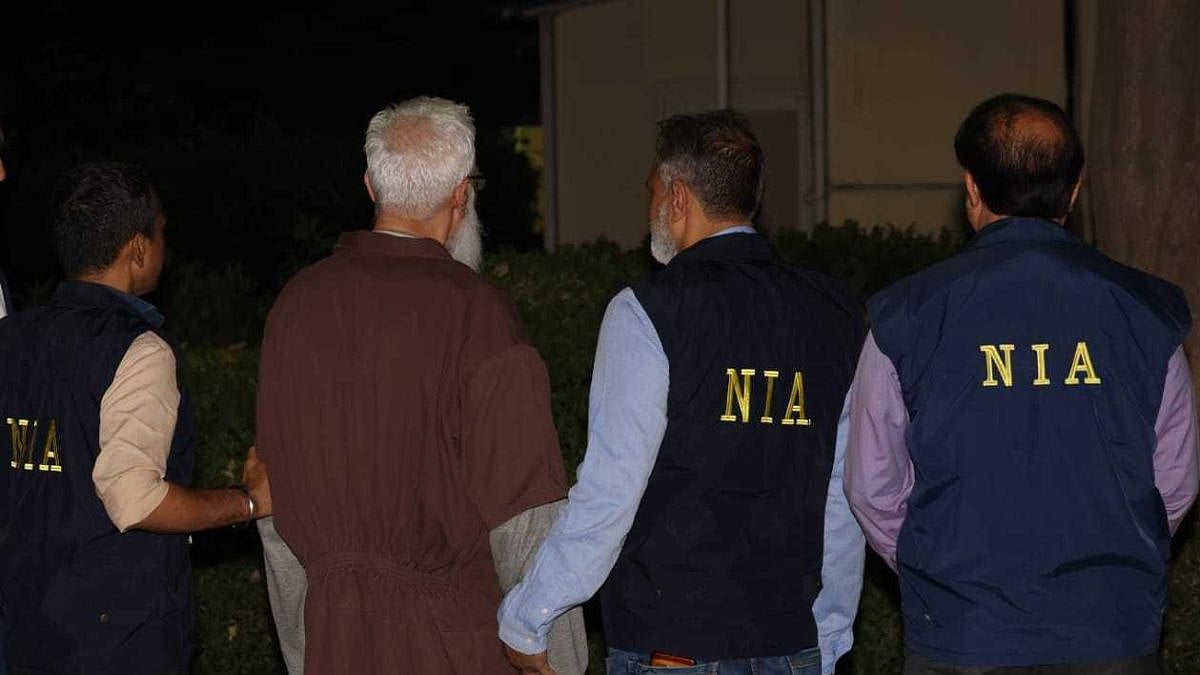A detailed investigation by the National Investigation Agency (NIA) has revealed new insights into the covert network behind the 26/11 Mumbai terror attacks, exposing a complex web of aliases, encrypted emails, and business fronts allegedly used by key conspirators to orchestrate the deadly assault.
An investigation by the National Investigation Agency (NIA) has revealed that Pakistani-origin Canadian national Tahawwur Hussain Rana, along with his co-conspirators David Coleman Headley and senior Lashkar-e-Taiba (LeT) operative Sajid Mir, operated under coded aliases while planning and coordinating terror activities in India. Encrypted email communications show that Rana was referred to as “Doctor,” Headley as “Dave,” and Sajid Mir as “Pir Sahab.” The term “business” was used as a covert code to refer to terrorist operations, reconnaissance missions, and target acquisition. These aliases and codes were used to conceal operational details related to the planned 26/11 attacks.
Several email IDs were created to facilitate communication between Tahawwur Rana, David Coleman Headley, handlers of Ilyas Kashmiri, and top Lashkar-e-Taiba operatives, A identified as Sajid Mir and B identified as.ISI handler Major Iqbal.
NIA officials, currently tight-lipped about the interrogation, stated that the investigation is at a crucial stage. While most of the details related to the 26/11 attacks are currently being reviewed, the focus is on the second phase, which remains under shadow. It is still too early to make any statements without thoroughly verifying every fact.Only a select few members of the NIA are involved in the interrogation, and any statements made during the interrogation are considered classified information.
One particularly revealing finding involves an encrypted email thread in which Rana mentions his brothers, Brigadier Movadat Hussain Rana and Sibte Hassan Rana, as part of an encrypted reference chain mail. . An email ID linked to “mov.monie@yahoo.com” was found to have been accessed from Rana’s Chicago-based immigration office, First World Immigration Services, later used by Headley while operating from the UAE. This points to a deliberate overlap between personal and operational communication channels.
Investigations reveal that, in addition to Rana's immigration consulting services through First World Immigration Services, which had offices in Chicago, Toronto, and New York, he was also running a halal meat supply business from his farm in Kinsman, Illinois, and owned a grocery store in Chicago. The NIA suspects that these businesses were not only used to generate funds but also provided logistical support for terror operatives like Headley, who traveled to India eight times, as well as to Denmark and Pakistan, under the guise of business expansion.

Sources said Rana personally facilitated Headley’s travel and supported his cover as a business consultant, strengthening his alias as a legitimate business agent while he conducted surveillance and target acquisition missions for Lashkar.
The NIA investigation has revealed that Sajid Mir's operational base during the planning phase of the 26/11 attacks was located in the Razmak region of North Waziristan. Findings suggest that Headley is believed to have traveled to this facility multiple times to directly coordinate with Mir. After his time in India, Headley made regular trips to Pakistan, where he met with Major Iqbal, Sajid Mir, and several Lashkar commanders. During these visits, Headley provided video footage, pictures, and reconnaissance of several sensitive locations, which he meticulously gathered over all eight of his trips. These locations included key sites in Mumbai, such as the Taj Mahal Palace Hotel, Oberoi Trident Hotel, and Chhatrapati Shivaji Maharaj Terminus (CST), as well as important military establishments, including Mumbai's INS Shikra naval base, the Delhi Cantonment, and critical military bases in Pune, including the Air Force Base. He also documented sites in Rajasthan, further expanding his reconnaissance to cover vital infrastructure across India.
According to findings shared by the FBI with the NIA, an amended criminal complaint filed after 26/11 noted that Rana appeared "relaxed" when Headley was questioned about the attacks in India. This is specifically highlighted in an email exchange dated December 2008.
On December 25, 2008, “Individual B” (Major Iqbal) asked Headley, “How’s the doctor’s reaction to what all is happening? Is he terrified or relaxed?”
Headley responded on December 26, 2008:
“Doctor [Rana] is very relaxed.”
Headley informed his Lashkar-e-Taiba contacts that Rana remained calm and was guiding him on how to handle situations if anything went wrong, indicating Rana was mentally preparing and encouraging him for covert tasks. Sources pointed out that Headley’s statement to Lashkar-e-Taiba is significant as it reflects his ability to mislead agencies and manipulate narratives at will.
According to senior officials, one of the primary objectives in questioning 64-year-old Rana, a key accused in the Mumbai terror attacks, is to uncover the identities of local Indian assets and helpers who may have supported Lashkar-e-Taiba operatives. Rana's local contacts were reportedly used to assist David Headley during his visits to India. Indian officials have consistently maintained that the scale and precision of the attacks targeting iconic locations like Chhatrapati Shivaji Terminus, the Taj Mahal Palace Hotel, the Oberoi Trident, and Nariman House would have required local knowledge or support.
As the interrogation of Rana progresses, the NIA hopes to uncover further details that could lead to a deeper understanding of the 26/11 attack’s orchestration, including the elusive identities of potential local collaborators. Senior officials note that Rana remains a key figure in the investigation, and his testimony could provide critical insights into the attack’s logistical support and execution.









